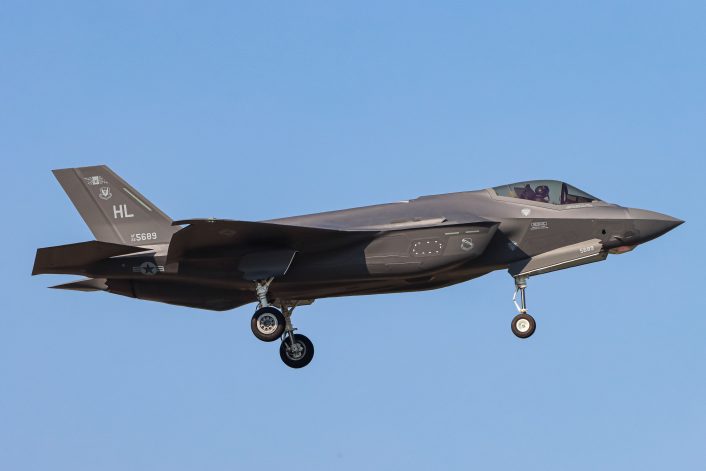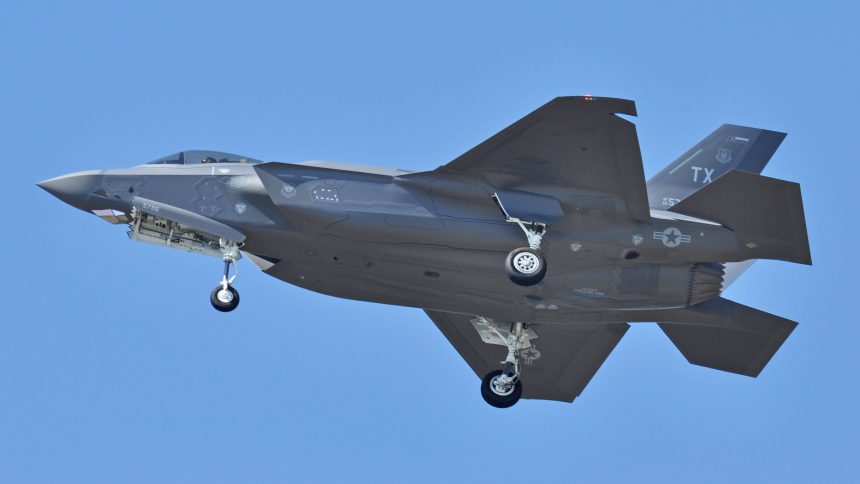The jet with the TX tail code will soon join the fleet of the “Spads” as part of the first stand-alone F-35 Air Force Reserve Wing.
The F-35A Lightning II jet bearing the markings of the 457th Fighter Squadron “Spads” of the 301st Fighter Wing, flew on Oct. 15, 2024, at Naval Air Station Joint Reserve Base Fort Worth, Texas, as a nice shot, taken by photographer Gail Snyder (@jetarazzi), shows.
Using the radio callsign LIGHTNING 41, this aircraft, tail number 22-5786/AF449, is the first F-35 to feature the TX tail code and will be the first to be assigned to an Air Force Reserve unit, as all previous F-35s delivered had been destined to the USAF or Air National Guard.
The aircraft, piloted by a Lockheed Martin test pilot, conducted its first flight on Friday, Oct. 11, 2024, and flew again on Oct. 15, just before noon.
The 457th FS has been operating 3 F-35A with Hill Air Force Base colors and codes since August. In fact, on Aug. 8, 2024, the 301st Fighter Wing, received its first two F-35A Lightning II jets (followed by another one) to replace their aging F-16C/Ds at NAS JRB Fort Worth. Notably, these initial jets displayed the tail markings “HL” although they never went from Hill AFB, in Utah, but arrived straight from the factory and loaned to the 301st FW: the jets will eventually be reassigned to Hill AFB, where the Air Force Reserve’s other F-35A unit, the 419th Fighter Wing, is based.

The 301st FW is set to become the first Air Force Reserve unit to operate the F-35A independently, without being tied to an active duty counterpart. By 2026, the Wing is scheduled to receive a total of 26 F-35s.
The arrival of these F-35 aircraft signified a major transition for the 301st FW, marking the start of a new era after decades of operating F-16s. The older F-16s from the 457th Fighter Squadron at Fort Worth were reassigned to other bases like Nellis AFB, were some of the Vipers were “recruited” by the 706th Aggressor Squadron.
View this post on Instagram
Col. Benjamin R. Harrison, commander of the 301st Fighter Wing, highlighted the significance of the transition when the first two jets were delivered: “The arrival of the F-35 ushers in a new era for our wing, replacing the older F-16s with the most advanced fighter jet available. None of this transition would be possible without the dedication of our personnel and the support from our community partners.
Harrison noted that the delivery of the first two jets was part of a phased process over the next 12 to 15 months. “As we bring in more F-35s, we’ll focus on enhancing the skills and proficiency of our Airmen to ensure a seamless transition to full operational capability.”
During the transition, the unit will prioritize building expertise in operating and maintaining the F-35, aiming to maximize combat readiness. Harrison also emphasized that the first group of pilots and maintainers had been specifically chosen for their roles and are fully trained on the F-35, marking the beginning of a new chapter in the wing’s combat capabilities.
The 301st Fighter Wing’s legacy dates back to World War II, initially flying the P-47N Thunderbolt, and more recently, the F-16 Fighting Falcon, which served as its primary aircraft from 1992 until its decommissioning in 2023. The wing’s shift to the F-35 began with planning in 2016 and is expected to conclude ten years later, when the final aircraft arrives. With the introduction of the F-35, the wing continues its mission to train and deploy combat-ready airmen.
NAS JRB Fort Worth
Naval Air Station Joint Reserve Base (NAS JRB) Fort Worth, situated next to Lake Worth, occupies the site of the former Carswell Air Force Base. It serves as a major installation housing multiple military units. The base supports the Air Force Reserve’s 301st Fighter Wing, which operates F-35A Lightning II jets, and the Texas Air National Guard’s 136th Airlift Wing, equipped with C-130J Super Hercules aircraft. Additionally, the Marine Corps Reserve’s VMFA-112 operates F/A-18 Hornets, along with VR-1 and VMGR-234, which fly the C-40A Clipper and KC-130J Super Hercules, respectively. The Navy Reserve’s VR-59 and the Army Reserve also operate from this base with aircraft such as the UC-35A and C-12 Huron.
The base also houses the headquarters for the Tenth Air Force, which oversees most of the Air Force Reserve’s units. In 2021, the 136th Airlift Wing of the Texas Air National Guard upgraded from the older C-130H to the newer C-130J. By 2029, the Marine Fighter Attack Squadron 112 (VMFA-112) plans to replace its aging F/A-18 Hornets with F-35B Lightning II jets.
The other half of the airfield is occupied by Air Force Plant 4, where Lockheed Martin operates a large factory employing 17,000 people. This facility, owned by the U.S. Air Force, produces new F-16 Fighting Falcons and all versions of the F-35 Lightning II. Historically, the factory, established during World War II, built B-24 Liberators and later produced aircraft such as the B-36 Peacemaker, B-58 Hustler, and F-111 Aardvark, before transitioning to modern jets like the F-16 and F-35.
A big thank you to Gail Snyder (@jetarazzi) for sending us the images and to our friend Gherardo Fontana for the heads up!









